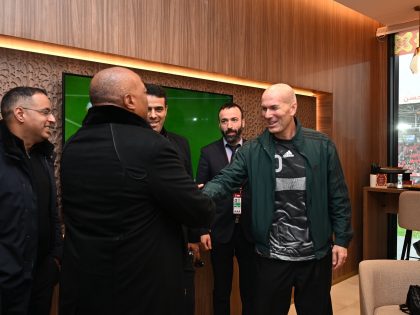The news about land reform in Zimbabwe

Land reform and Zimbabwe; say those words in any order and you get a reaction. It obviously was a failed and atrocious attempt of a corrupt leader who bribes people to vote for him and then still lies about the result just to be popular amongst his people. Obviously. Well, obviously at least if you have been following the story through almost any media with the exception of New African magazine – I honestly cannot think of another exception that I’d know of. According to this news narrative that unsurprisingly enjoys unquestioned consensus in the western press, the agricultural sector of Zimbabwe collapsed and violence coloured the previously white farms first red and then black as the ownership landed neatly in the hands of Mugabe’s political cronies. Right?
Wrong. A group of researchers mainly from Zimbabwe has conducted a fascinating study* which focuses on the Masvingo Province in the southern part of the country, but reflects the circumstances on a much broader national level. Based on their on-the-ground research they found out – and I am not going to get too much into details since the findings are available in the booklet that I have (and in the book, which I haven’t read) – that many of these myths are just that. Myths.
Admittedly, agricultural production has struggled in many ways and since the land reform certain crops such as wheat, coffee, tea and tobacco have not reached the same production standard as before. That is the kind of stuff we know because the media – even if not so much recently – went on and on about how terribly things have been going. What was forgotten was that the production of certain other crops such as small grains, edible dry beans and cotton have been increasing. The production of dry beans is actually up 282% since reform.
Production is also much more diverse than what it was with new ideas and new products introduced. And while political corruption did exist, and still does, in the form of inside golden handshakes and the so-called cronies owning the land, the truth isn’t quite as simple with regards to that either. Out of the people who own any of the redistributed land only less than five per cent fall into that category. Mostly the new owners are a diverse group of people of all ages, some former farm workers and others from the cities. They invest in the land and farms so much so that the research team had calculated the full amount of investment for the country being US$91 million since 2000, which is quite a bit for a financially struggling country.
The main points – at least some of them – are that Zimbabwean agriculture is in transformation. The old didn’t continue in the new, but structures are changing and considering the short time period of a mere decade as well as largely absent state or NGO funding, the successes, where they have been, are remarkable and can be attributed to a few things, but mainly hard work and a certain amount of creativity. I really recommend you to read the booklet as it is very interesting. The ultimate condensing of its message is that not that it’s all good, but it’s not all bad either; it’s complex, but there’s a lot of potential and promise.
The reason why I am particularly interested in all this is the fact that I spent some time in the country soon after the main wave of reforms and farm takeovers, when according to the news white people were being killed in the country as a rule. Of course that was a lie – much of the news is very one sided anyway – but since agriculture or land reform aren’t something I know all that much about, I wanted to expand the idea to a few things I am able to speculate on. I also want, at this point, to emphasise that I am neither celebrating the current political structure of Zimbabwe nor trying to tell how the future should go. I am not a specialist and even if I was I’d have the decency to shut my mouth about it. I am, however, interested in the reaction of the so-called western media. So based on these findings, why is it that the news stories from Zimbabwe were, and still are whenever occasionally they are published, so misleading?
First we need to understand that the now heavily demonised President Mugabe is one of the world leaders who chose not to be a western puppet. He hasn’t been taking orders from the north and he has been very vocal about it. I am not saying that he is a great leader – I believe he definitely was a great leader and one of the heroes of the independent Zimbabwe, who got somewhat sidelined and forgot to share the power, but his biggest sins, in this context at least, are not the ones he has committed against his people – especially the ones in the urban areas – but the ones where white people have been at the receiving end; the farmers and the western leaders, the BBC journalists and NGOs.
To mess with those people is to lose a PR war. No matter what the actual outcomes of your actions and policies are, you are ranked lower than Nazis on the morality chart of western norms. If there’s one thing we white people are, we are sore losers. And I don’t say this to generalise individuals, only to describe our mostly racist structures of power and communication. You are free to disagree, but what has been normalised in the past centuries runs deep. And deep down there it informs our school books, media and through that, our world view thus being kind of invisible, because it is what we are so used to see and because it doesn’t really inconvenience us, we simply don’t pay attention to it.
The news about Africa – to a large degree – are informed by development aid providing NGOs, suggests Karen Rothmyer in her Harvard University discussion paper They Wanted Journalists to Say ‘Wow’: How NGOs Affect U.S. Media Coverage of Africa (2011). A similar idea is also explored in C.P. Eze’s brilliant book Don’t Africa Me (2008). The fact is that there is a whole industry of western aid that employs thousands of Europeans, Americans, Australians and people from many other countries. These NGOs rely to a large extent on outside funding and in order for them to receive that funding they have to prove that the need is huge. In order for Bono and Bob Geldof (who rely on this less financially) to raise funds for an urgent need with famine or so, they must basically paint as terrible a picture as possible for us to give as much money as possible. While some great things might be achieved, some other terrible things come as a result. This goes to your red nose days and all. So the reason I have digressed a bit, is that what has happened in Zimbabwe has happened outside of that structure; there haven’t been any gap-year Dutch teens patronising locals because they receive a bit of money and an experience of a lifetime to do so.
There haven’t been that many older professional aid workers either, but local people have come together. That goes against the aid narrative according to which such aid is needed that only predominantly white Europeans and Americans can oversee it or else the corrupt and uneducated locals will make a mess of it.
Finally, the last of my speculations is that Zimbabwean land reform comes too close to something that is non-negotiable: South African land reform. In order to keep away from any meaningful debate around the land issue in South Africa, Zimbabwe has had to look like a failure. It has had to look not only like a bad idea, but also as an evil idea. It can’t be only a question of agriculture and economics, but it needs to be a question of human rights, and mainly, the rights of the white humans at that. The long knives are terrorising the nightmares of the white farmers so subsequently they will also dominate the news dystopia.
I am sure there are other reasons as well and the matter is complex. The summary of the whole thing, in the real world, is that it’s not that it’s all good, but it’s not all bad either. Like my undergraduate Professor always told me – It’s complicated. The news, as opposed to the reality on the ground, thinks that it’s simple, but my argument is that they are simply wrong.
Some recommended reading:
1. Download the booklet: Zimbabwe’s Land Reform: A Summary of Findings
2. Download the discussion paper: They Wanted 3. Journalists to Say ‘Wow’: How NGOs Affect U.S. Media Coverage of Africa
3. Video series: Zimbabwe’s land reform: Voices from the field – Parts 1- 8
4. Ian Scoones et al. (2010) Zimbabwe’s Land Reform: Myths and Realities. James Currey.
* Mikko (@mikmikko) blogs at Welfare State of Mind.



















